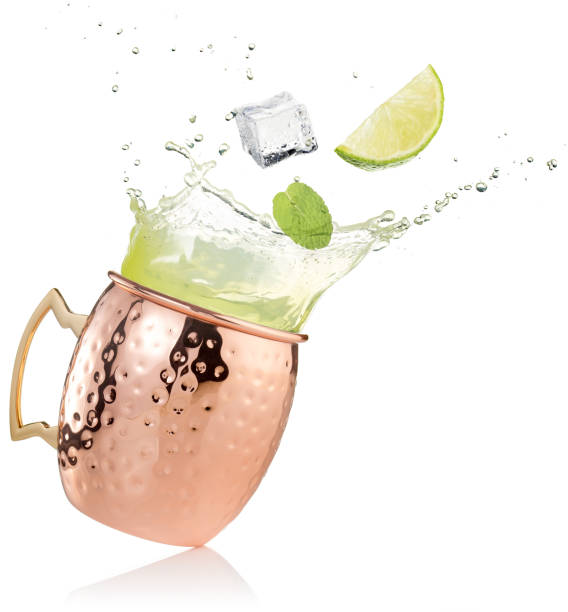Vodka n. 21 Red Label Smirnoff
Vodka Smirnoff no. 21 Red Label is a vodka made from wheat obtained by triple distillation, followed by 10 filtrations which give it a singular purity. Appearing in the movie "007 License to Kill" with James Bond, it has since become one of the best known and most popular vodkas in the world. Pure and crystalline to the eye, Vodka no. 21 Red Label by Smirnoff expresses evident floral and spicy hints on the nose, surrounded by notes of aromatic herbs, white pepper and elegant chocolate nuances. O...
View product pageIngredientsGinger beer, vodka and lime are the basis of this very fresh and thirst-quenching drink. Here are the doses of the Moscow Mule ingredients recommended by the IBA:
PreparationThe Moscow Mule is prepared by pouring vodka, ginger beer and lime juice in a copper cup or in a highball type tumbler glass filled with ice. Then the ingredients must be mixed with a stirrer or a bar spoon. Garnish with a slice of lime. And the cucumber? There is no original recipe: the custom of adding the cucumber slice seems to derive from the Russian tradition of eating some pickled gherkins as an accompaniment to vodka shots but it has nothing to do with the history of the Moscow Mule. |  |
variants
Like any self-respecting classic recipe, the Moscow Mule also has its digressions, even in this case, in fact, fantasy is the first rule of the barmen, who year after year have fun giving a touch of originality to the drinks: who inserts the phantom slice of cucumber, who the berries, who instead of lime prefers cedar juice. A trendy variant is the one that replaces gin with vodka: Gin Gin Mule or better known as London Mule . The taste of gin, in fact, seems to combine perfectly with the pungent note of ginger. The Dark and Stormy , on the other hand, is the tropical version of the dark rum drink and has great approval in clubs all over the world.
Food pairings
The Moscow Mule goes perfectly with any appetizer dish, from finger food to the classic cold cuts platter . But not only that, this cocktail most accompany a wide variety of dishes such as cold pasta , roasted and interesting meat paired with paella.
Origins
Although the translated name means "Moscow mule", this cocktail has nothing to do with the Russian city: it was born, in fact, in New York in 1941 from the meeting of two entrepreneurs looking for luck to get their products off the ground. John G. Martin was the distributor of the Smirnoff brand in the United States and Jack Morgan the manager of Cock'n'Bull, a Hollywood club that was very popular with the stars between the 1940s and 1950s.
Martin was looking for a way to advertise Vodka Smirnoff and the challenge seemed to be difficult since Soviet distillate was not very popular in the United States at the time. Morgan instead wanted to popularize his new ginger beer production line.
At the same counter that day, there was also a woman, a Russian immigrant looking for luck, who carried with her copper cups (the Mug) engraved with the image of a mule (that's why the bizarre name) , imported from your country to sell them in the United States. The three, confronting the business problems, had the idea of mixing the two products in the copper cup by adding ice and lime juice ... what came out in a short time spread throughout the United States with a resounding success!
Even today, tradition has it that the Moscow Mule is served in the Mug for two reasons: first because copper is an excellent conductor and the cup cools quickly and secondly because it is thought, not on proven grounds, that the interaction between copper and lime adds something to the taste of the cocktail. By now in many cases a highball type tumbler glass is used as for most long drinks.
{Snippet: MENUCOCKTAIL}

